Activated charcoal, also known as activated carbon, is a staple in aquarium filtration. This porous form of carbon is highly efficient at trapping contaminants and is widely sought after for its ability to clear water of organic pollutants, tannins that can discolor the water, and even odors that detract from the overall health and aesthetic of your fish’s environment. By incorporating activated charcoal in your aquarium filter, you are taking a significant step towards maintaining an environment that is both visually clear and chemically balanced for your fish and plants.
To get started with activated charcoal in your aquarium, it’s as simple as placing the carbon in a filter media bag, which keeps the charcoal in place and facilitates easy removal for maintenance. You’ll want to add this to your filter system following the mechanical filtration stage; this sequence ensures that larger particles are captured before water passes through the fine pores of the activated charcoal, maximizing its efficiency. Plus, a key point to remember is to always rinse the charcoal before use to remove any dust that may have accumulated during packaging or transit. Over time, usually every few weeks, the effectiveness of your activated charcoal will diminish, so regular replacement is crucial to keep your aquarium thriving.
What Is Activated Charcoal?
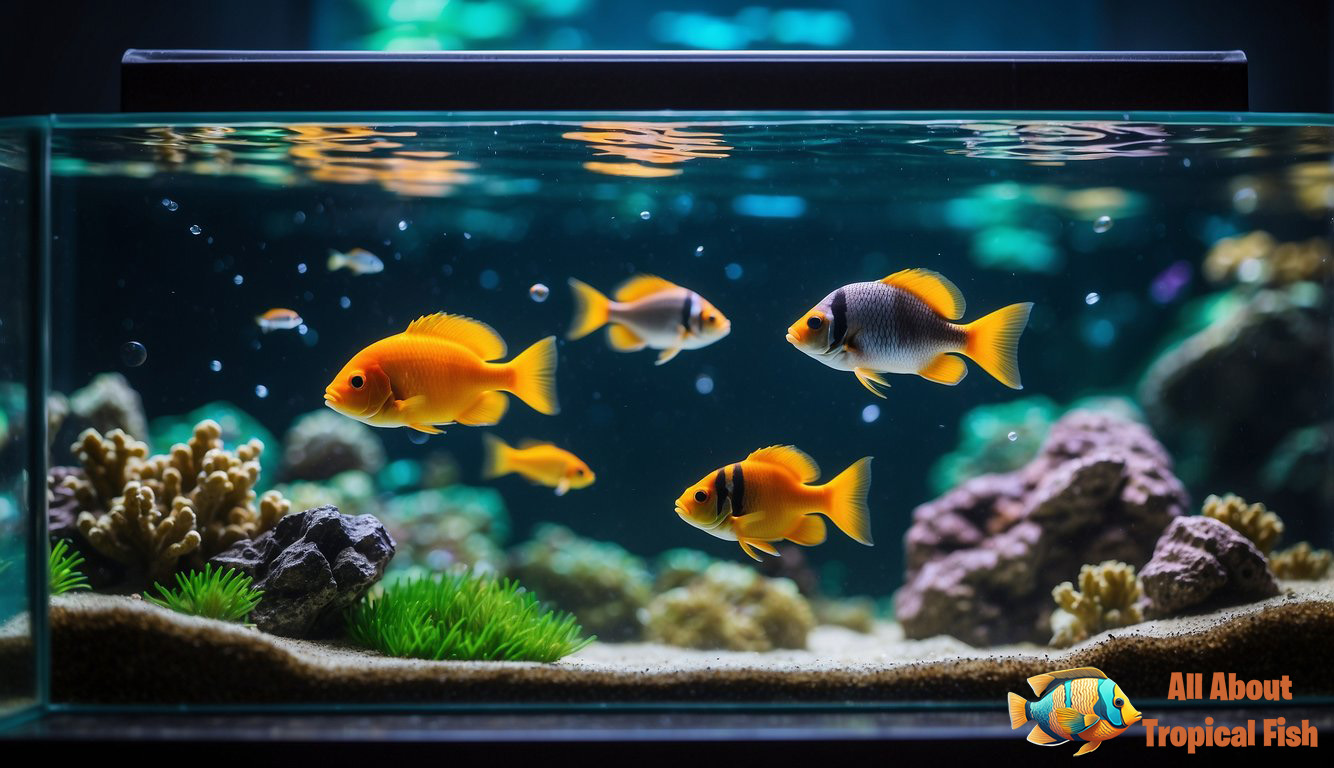
Activated charcoal, also known as activated carbon, is integral to maintaining a healthy aquarium environment by assisting in purifying the water. Let’s take a look at how this powerful filtration media came to be and how you can use it effectively in your fish tank.
History and Origin
Activated charcoal’s history dates back to ancient times, but its use in water treatment began in the 20th century. Initially derived from charred sources like wood, coal, and coconut shells, the process has evolved to include different types of carbon sources and activation methods.
How Activated Charcoal Works
Activated charcoal works through adsorption, where contaminants in the aquarium water adhere to the surface of the charcoal due to its high surface area. Steam is often used in the activation process to create a highly porous structure, which enhances its ability to capture impurities.
Types of Activated Charcoal
There are several types of activated charcoal used in aquarium filters:
- Granular Activated Carbon (GAC): Rough particles with varying sizes.
- Powdered Activated Carbon (PAC): Fine particles that can treat large volumes of water quickly.
- Extruded Activated Carbon (EAC): Shaped into cylindrical pellets, known for low dust content.
- Bead Activated Carbon: Small, spherical beads, a newer form of carbon.
- Pelletized Activated Carbon: Small, compressed pellets of powdered carbon.
These types can be derived from multiple sources, such as bituminous coal or coconut shells.
Choosing the Right Form
Your choice in activated charcoal form will depend on factors like pore size and the specific contaminants you need to address. Here’s a simple guide to help you decide:
- Granular: Good for tanks with high flow rates.
- Powder: Excellent for quick and effective water treatment.
- Pellets and Beads: Ideal for systems that require low dust and ease of use.
- Block: A compact option for smaller filters where space is limited.
Benefits of Using Activated Charcoal in Aquarium Filters
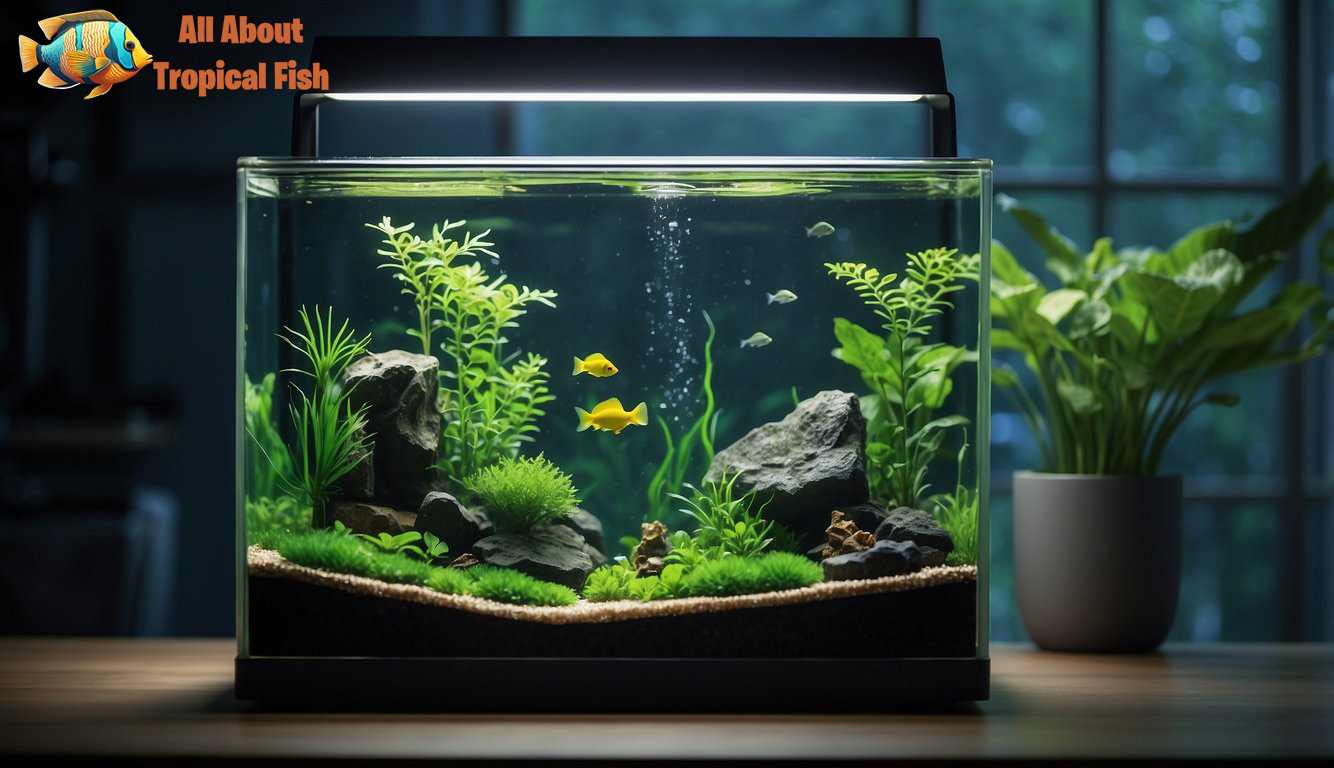
Activated charcoal is a powerhouse for maintaining the health and clarity of your aquarium water. Through its exceptional filtration capabilities, it tackles various issues that can arise in a tank environment.
Chemical Filtration
Activated charcoal, or carbon, is highly effective at removing a range of chemical contaminants from aquarium water. When you add it to your filter, it acts like a sponge, absorbing toxins, medications, and chlorine or chloramine. This is especially beneficial after treating your fish with medicine, as it can promptly remove any residues.
Controlling Odors and Discoloration
Nobody wants a fish tank that smells or looks unclean. Using activated charcoal in your aquarium filter can eliminate odors caused by phenols, which are commonly produced from fish waste and decaying food. It also combats discoloration, keeping your water clear by adsorbing tannins that can give it a brownish hue.
Enhanced Water Quality
High-quality water is essential for your fish’s health. Activated charcoal improves water quality by helping control the levels of nitrates, phosphates, ammonia, and nitrites. Regular replacement of the charcoal is crucial as once saturated, it cannot adsorb more contaminants, so refreshing it keeps your water purification system at peak performance.
Activated Carbon in Different Aquarium Types
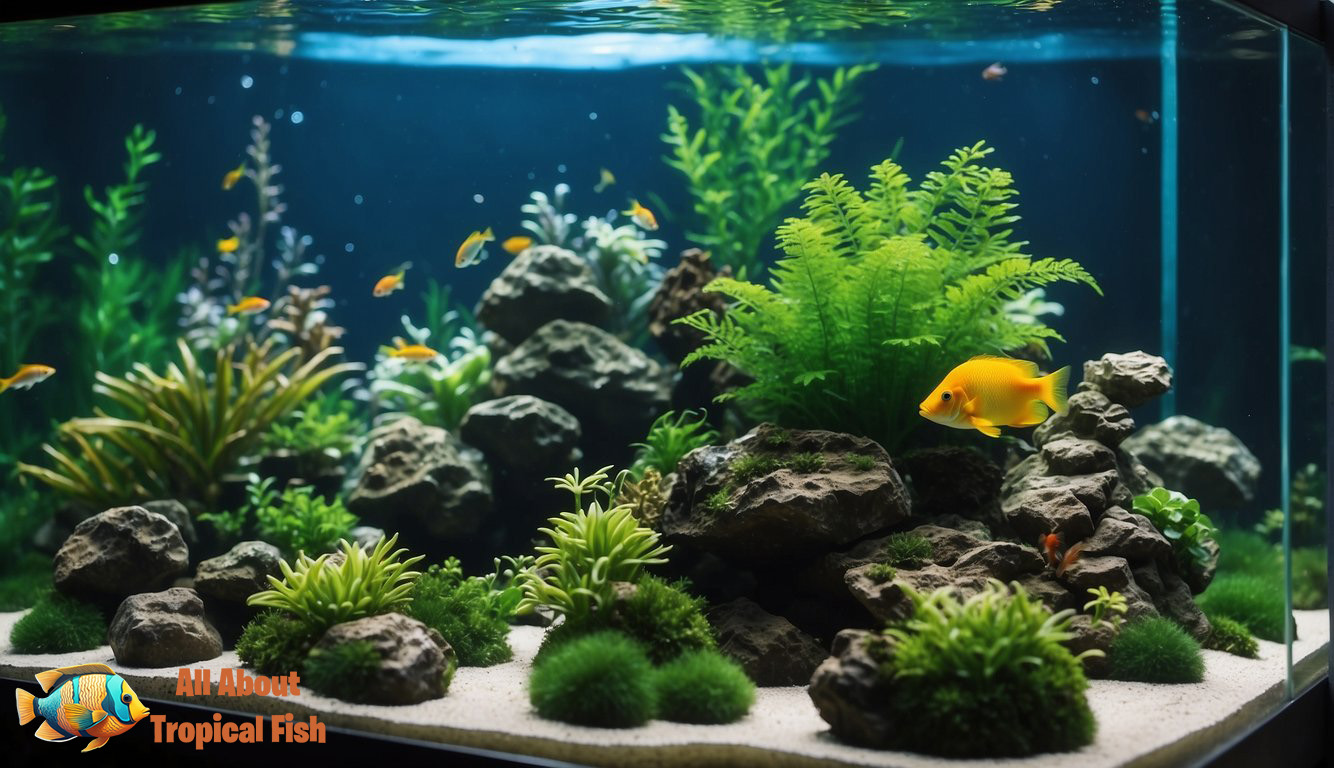
Whether you have a freshwater tank, saltwater setup, or a specialized reef tank, incorporating activated carbon can help maintain a healthier environment for your fish.
Freshwater Aquariums
In freshwater aquariums, activated carbon plays a crucial role in removing tannins, which can discolor water, and undesirable chemicals such as chlorine or remnants from medications after treating sick fish. It also aids in controlling algae growth by removing organic nutrients. However, be mindful to remove the carbon if you’re administering medication, as it can absorb these before they have a chance to act.
Saltwater and Reef Tanks
For saltwater and reef tanks, activated carbon is beneficial, especially when used in conjunction with protein skimmers, which alone may not remove all organic compounds. It helps to keep water crystal clear, removes smells, and prevents the yellowing of water that can occur in marine setups. It’s important to note, however, that overuse in reef tanks might strip essential trace elements, so using it intermittently is advised.
Benefits for Specific Aquarium Inhabitants
Your aquarium’s inhabitants will reap the rewards of a carbon filter in several ways. Fish in pristine water are less likely to get sick, while beneficial bacteria thrive without the competition of organic wastes. In reef tanks, particularly, activated carbon ensures that light penetration is optimum for coral health by reducing turbidity. Remember, a little carbon goes a long way, so always follow the recommended amounts for your specific aquarium type and size.
Installation and Maintenance of Activated Charcoal
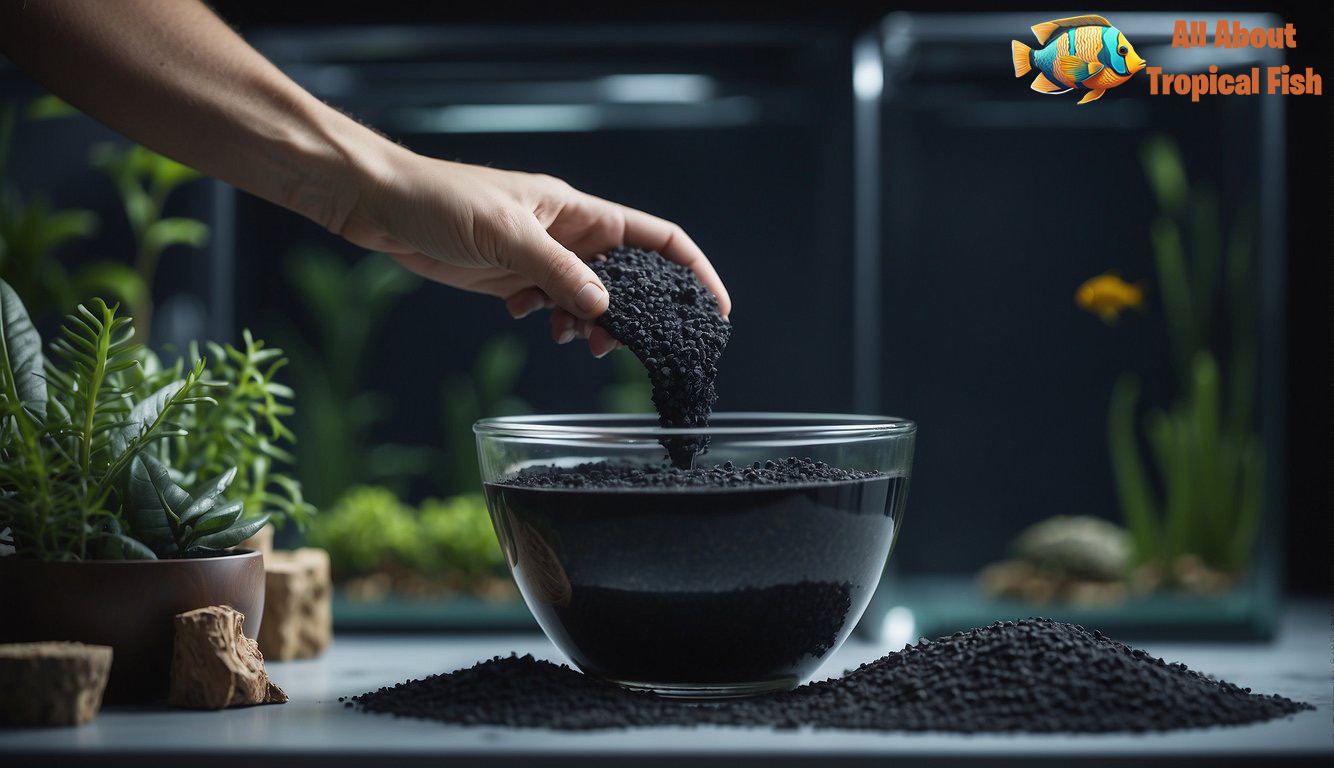
Incorporating activated charcoal into your aquarium’s filtration system is essential for effective water treatment. Proper installation and timely replacement are critical to maintain water clarity and remove contaminants for the health of your fish.
How to Add to Your Filter
To add activated charcoal, you’ll need a filter bag for containment. Begin by rinsing the activated carbon under cold water to remove any dust. Then, fill the filter bag with the recommended amount of activated carbon based on your aquarium’s size. Your mechanical filtration media should be in place first to catch particulates, followed by the bagged activated carbon. If you have a canister filter, insert the bagged carbon after the mechanical filter layers.
- Rinse the carbon to clear dust.
- Insert the bagged carbon behind mechanical filter media.
- Ensure proper placement within the filter system.
When to Replace Activated Charcoal
Activated charcoal becomes saturated over time as it adsorbs impurities and should be replaced routinely. As a general rule, you should replace the activated carbon every 2 to 4 weeks. However, the actual frequency can vary depending on the aquarium’s size, the fish population, and the amount of waste produced. Monitor water quality and clarity as additional indicators for when a change is needed.
- Replace every 2 to 4 weeks.
- Monitor water quality for additional cues.
- Schedule regular replacements as part of aquarium maintenance.
Common Maintenance Tips
For optimal chemical filtration, it’s crucial to keep up with routine aquarium maintenance alongside the use of activated carbon. Regular water changes, typically 10-20% weekly, will significantly support the function of your activated carbon. If you are using medications in the water, temporarily remove the carbon, as it can adsorb the medication and reduce its efficacy.
- Conduct water changes to assist chemical filtration.
- Remove carbon when medicating your fish.
- Avoid waiting until carbon is completely saturated before replacement.
Common Questions and Concerns
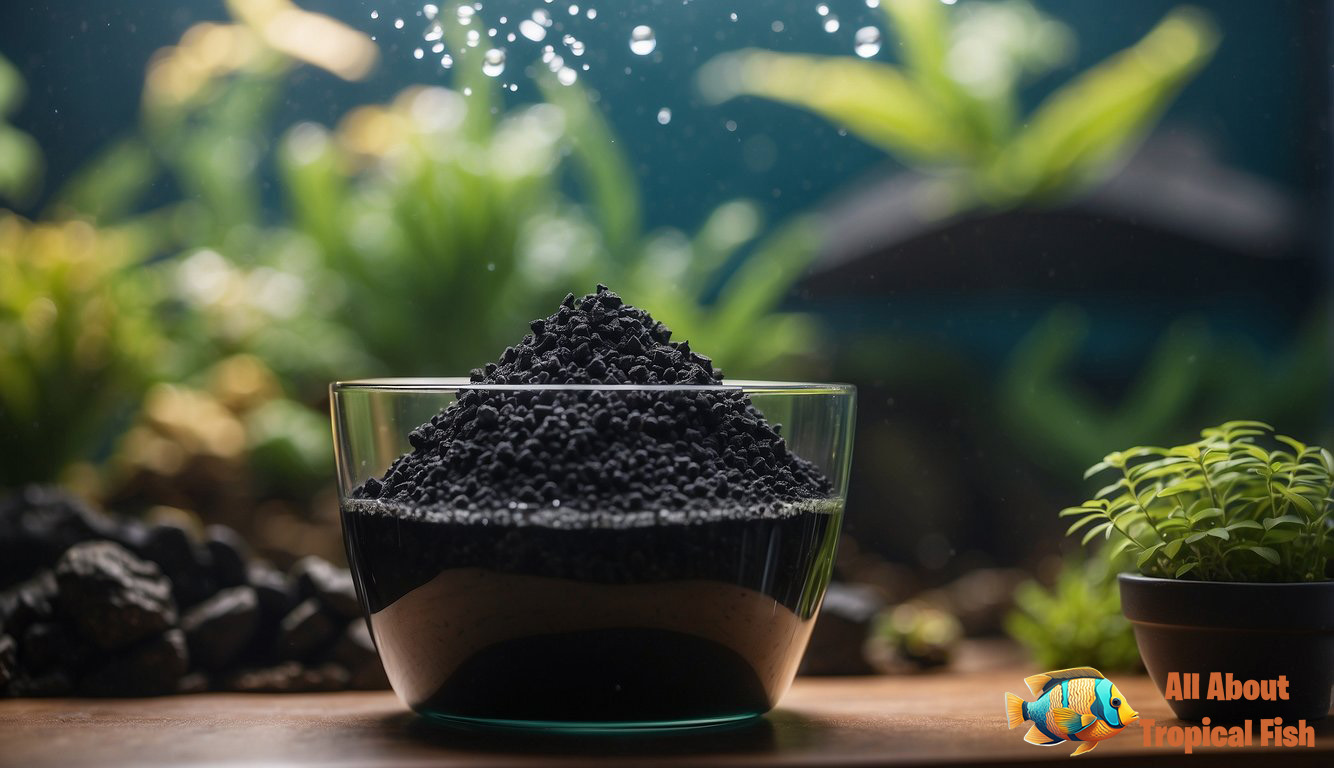
As you explore the use of activated carbon in your aquarium, you might have questions about its effects on beneficial bacteria, whether it can leach substances into the water, and what common myths need clarification. Let’s clear up these concerns.
Impact on Beneficial Bacteria
Activated carbon, crucial in maintaining your aquarium’s clarity, does not harm beneficial bacteria as some fear. These bacteria mostly reside on substrates and within biological filtration systems, while activated carbon primarily handles toxins, medications, and odors in the water column.
It’s key to understand that Activated carbon does not disrupt the nitrogen cycle, which beneficial bacteria are a part of. What it does is efficiently adsorb dissolved contaminants and can help in reducing unnecessary algae nutrients without affecting the biological filtration.
Dealing With Leached Compounds
The possibility of leaching has been a topic of interest. Quality activated carbon should not release phosphates or other harmful minerals back into the tank if it is phosphate-free. However, over time, all carbon degrades and could leach absorbed materials, so it’s important to replace it every few weeks as suggested.
You may want to occasionally use a water conditioner to ensure any inadvertent leaching of compounds does not affect your tank’s balance. Also, be cautious of the fact that activated carbon can remove some trace elements essential for a thriving aquatic environment, which may need replenishing.
Addressing Myths and Misconceptions
Let’s tackle some myths and misconceptions. Firstly, activated carbon is not a magical fix for all aquarium issues – its job is to adsorb organic pollutants. Also, it’s not accurate that once saturated, carbon releases everything it’s adsorbed. Though carbon can indeed become less effective over time, it typically does not dump absorbed materials back into the water suddenly.
Remember, not all activated carbon is the same. Some types are better at adsorbing certain chemicals, so it’s worth researching the kind that fits your needs. For instance, if your main concern is removing medication after treatment, make sure you choose a carbon known for its effectiveness in this area.
Conclusion
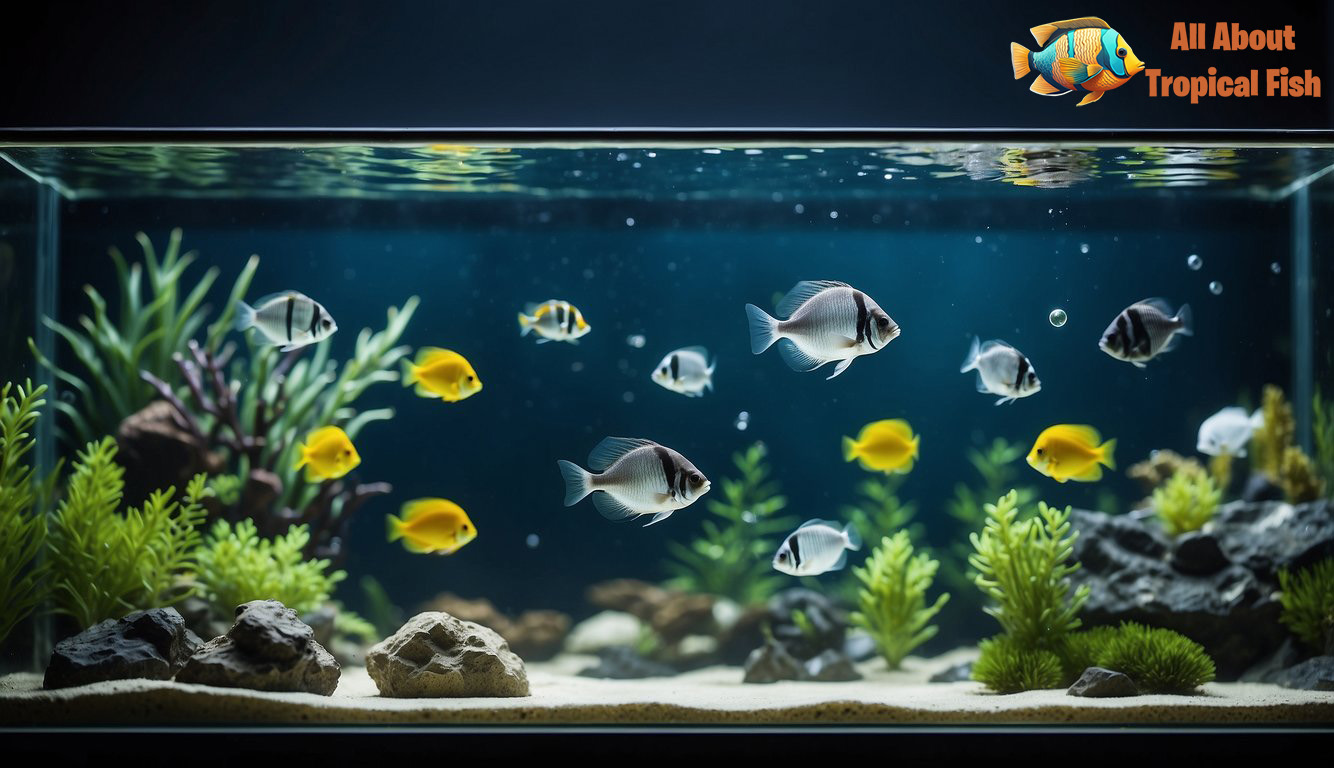
When considering the use of activated charcoal in your aquarium filter, remember it’s a powerful tool for maintaining water clarity and removing impurities. Its porous nature makes it adept at adsorbing unwanted substances from the water column in home aquariums, contributing to the overall health of your aquatic life.
Professionals in the aquarium industry often recommend activated charcoal for its consistent performance. However, it should not be the only filtration method used. Pair it with biological and mechanical filtration to create a comprehensive system.
Remember, while activated charcoal is a common and beneficial addition to many home aquariums, its use should be tailored to your specific needs and the needs of your aquatic inhabitants. Stay informed, stay proactive, and your aquarium will thrive.



Leave a Reply